The common risk factors for progression and mortality in COVID-19 patients: a meta-analysis
- PMID: 33797621
- PMCID: PMC8017903
- DOI: 10.1007/s00705-021-05012-2
The common risk factors for progression and mortality in COVID-19 patients: a meta-analysis
Abstract
Coronavirus disease 2019 (COVID-19), defined by the World Health Organization (WHO), has affected more than 50 million patients worldwide and caused a global public health emergency. Therefore, there is a recognized need to identify risk factors for COVID-19 severity and mortality. A systematic search of electronic databases (PubMed, Embase and Cochrane Library) for studies published before September 29, 2020, was performed. Studies that investigated risk factors for progression and mortality in COVID-19 patients were included. A total 344,431 participants from 34 studies were included in this meta-analysis. Regarding comorbidities, cerebrovascular disease (CVD), chronic kidney disease (CKD), coronary heart disease (CHD), and malignancy were associated with an increased risk of progression and mortality in COVID-19 patients. Regarding clinical manifestations, sputum production was associated with a dramatically increased risk of progression and mortality. Hemoptysis was a risk factor for death in COVID-19 patients. In laboratory examinations, increased neutrophil count, decreased lymphocyte count, decreased platelet count, increased C-reactive protein (CRP), coinfection with bacteria or fungi, increased alanine aminotransferase (ALT) and creatine kinase (CK), increased N-terminal pronatriuretic peptide (NT-proBNP), and bilateral pneumonia in CT/X-ray were significantly more frequent in the severe group compared with the non-severe group. Moreover, the proportion of patients with increased CRP and total bilirubin (TBIL) was also significantly higher in the deceased group than in the survival group. CVD, CKD, sputum production, increased neutrophil count, decreased lymphocyte count, decreased platelet count, increased CRP, coinfection with bacteria or fungi, increased ALT and CK, increased NT-proBNP, and bilateral pneumonia in CT/X-ray were associated with an increased risk of progression in COVID-19 patients. Moreover, the proportion of patients with increased sputum production, hemoptysis, CRP and TBIL was also significantly higher in the deceased group.
© 2021. The Author(s), under exclusive licence to Springer-Verlag GmbH Austria, part of Springer Nature.
Conflict of interest statement
The authors declare that they have no conflict of interest.
Figures
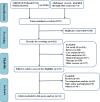
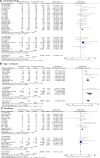
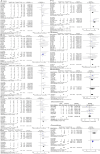
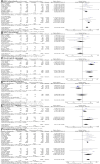
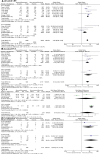
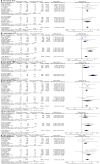
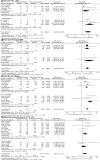

Similar articles
-
Predictive role of clinical features in patients with coronavirus disease 2019 for severe disease.Zhong Nan Da Xue Xue Bao Yi Xue Ban. 2020 May 28;45(5):536-541. doi: 10.11817/j.issn.1672-7347.2020.200384. Zhong Nan Da Xue Xue Bao Yi Xue Ban. 2020. PMID: 32879103 Chinese, English.
-
Clinical characteristics, laboratory abnormalities and CT findings of COVID-19 patients and risk factors of severe disease: a systematic review and meta-analysis.Ann Palliat Med. 2021 Feb;10(2):1928-1949. doi: 10.21037/apm-20-1863. Epub 2021 Jan 27. Ann Palliat Med. 2021. PMID: 33548996
-
Early Prediction of Disease Progression in Patients with Severe COVID-19 Using C-Reactive Protein to Albumin Ratio.Dis Markers. 2021 Dec 3;2021:6304189. doi: 10.1155/2021/6304189. eCollection 2021. Dis Markers. 2021. PMID: 34900028 Free PMC article.
-
A meta-analysis of SARS-CoV-2 patients identifies the combinatorial significance of D-dimer, C-reactive protein, lymphocyte, and neutrophil values as a predictor of disease severity.Int J Lab Hematol. 2021 Apr;43(2):324-328. doi: 10.1111/ijlh.13354. Epub 2020 Oct 3. Int J Lab Hematol. 2021. PMID: 33010111 Free PMC article.
-
Meta-analysis investigating the relationship between clinical features, outcomes, and severity of severe acute respiratory syndrome coronavirus 2 (SARS-CoV-2) pneumonia.Am J Infect Control. 2021 Jan;49(1):82-89. doi: 10.1016/j.ajic.2020.06.008. Epub 2020 Jun 12. Am J Infect Control. 2021. PMID: 32540370 Free PMC article. Review.
Cited by
-
Predictive for patients with pneumonia in pediatric intensive care unit.Front Pediatr. 2025 Jun 6;13:1583573. doi: 10.3389/fped.2025.1583573. eCollection 2025. Front Pediatr. 2025. PMID: 40547131 Free PMC article.
-
Glucocorticoid therapy in patients with COVID-19 and concurrent heart failure.Rev Clin Esp (Barc). 2022 May;222(5):309-310. doi: 10.1016/j.rceng.2021.11.002. Epub 2022 Jan 31. Rev Clin Esp (Barc). 2022. PMID: 35105515 Free PMC article. No abstract available.
-
In-hospital mortality prediction using frailty scale and severity score in elderly patients with severe COVID-19.Acute Crit Care. 2022 Aug;37(3):303-311. doi: 10.4266/acc.2022.00017. Epub 2022 Jul 5. Acute Crit Care. 2022. PMID: 35791648 Free PMC article.
-
EFFECTS OF HYDROXYCHLOROQUINE PLUS FAVIPIRAVIR TREATMENT ON THE CLINICAL COURSE AND BIOMARKERS IN HOSPITALIZED COVID-19 PATIENTS WITH PNEUMONIA.Acta Clin Croat. 2022 Nov;61(3):403-411. doi: 10.20471/acc.2022.61.03.05. Acta Clin Croat. 2022. PMID: 37492367 Free PMC article.
-
Analysis of an outbreak of COVID-19(alpha-variant) with rapid progression to mortality in Taipei, Taiwan.J Infect. 2022 Jan;84(1):e33-e34. doi: 10.1016/j.jinf.2021.11.009. Epub 2021 Nov 17. J Infect. 2022. PMID: 34800579 Free PMC article. No abstract available.
References
-
- WHO. Novel coronavirus situation dashboard. WHO, Geneva (2020).
-
- World Health Organization. Coronavirus Disease (COVID-19) pandemic https://www.who.int/emergencies/diseases/novel-coronavirus-2019. Accessed 1 June 2020.
Publication types
MeSH terms
Substances
LinkOut - more resources
Full Text Sources
Other Literature Sources
Medical
Research Materials
Miscellaneous

